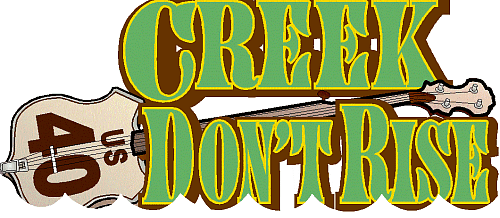T
Tailpiece - On instruments with moveable bridges like banjo, mandolin, and archtop guitar, the tailpiece attached to the end of the instrument and holds one end of the string. A century ago, many "flat-top" guitars (what we would call parlor guitars today) also had tailpieces, but as bracing improved, most flat-tops abandoned them.
Tenor Banjo - A four-string banjo that has a number of different tunings and uses. Generally banjos that are called "tenor" have shorter necks than "plectrum banjos" but that's hardly universal. Traditional tenor banjo tuning for Dixieland and related styles is the same as a viola. In some musical communities, mandolin players double on tenor banjo, tuning it an octave lower than their mandolin. This is also referred to as "Irish" tuning, as it's favored by many Celtic banjo players.
Tenor Guitar - A four-string guitar typically tuned like a tenor banjo. Back when tenor banjo was more popular than guitar, tenor guitars were made to help banjo players double on guitar. Originally they were full-sized, full-featured instruments. Today, many "baby" and "travel" guitars are being given four strings and called "tenor guitars." If the scale length isn't at least 21 3/4, that's not an accurate description. For more information, click here.
Tension Ring - On a banjo, a metal circle that covers the edges of the drum head. The Brackets hook over it and pull it down to apply tension to the drum head.
Three-Finger Picking - A kind of fingerpicking that uses the thumb and the first to fingers. This includes a number of guitar picking patterns. On banjo, "three-finger-picking" generally refers to a technique popularized by Earl Scruggs. For more information, see "Bluegrass banjo."
Tone Ring - A ring of metal, usually plated brass, that goes between the drum head and wooden pot of Bluegrass banjos. Tone rings help keep the vibrations of the drum head from being deadened by the wooden pot. On some banjos, the tone ring is designed to reflect higher frequences back toward the front of the banjo. Tone rings add sustain as well as volume, and professional Bluegrass banjo players require them on their banjos.
Tuners - See "Tuning Pegs."
Tuning Pegs - Also called "tuners," the devices you turn to tighten or loosen strings to raise and lower pitch respective. Originally, fretted instruments' tuning pegs were one-piece "friction" pegs like violins have today. But most fretted instrument have geared pegs today. As a rule the better tuning pegs are enclosed so the gears aren't exposed.
Z
Zero Fret - A fret that is directly adjacent to the nut so it sets the height of the strings over the lower frets.
And keep in touch so we know how you and your music are faring.
Best of luck, all, enjoy your music, and support the arts.
Paul Race
